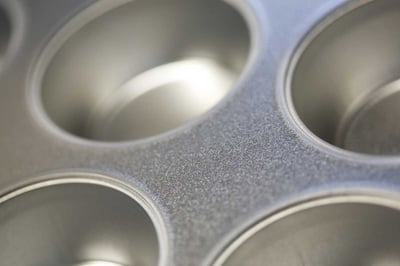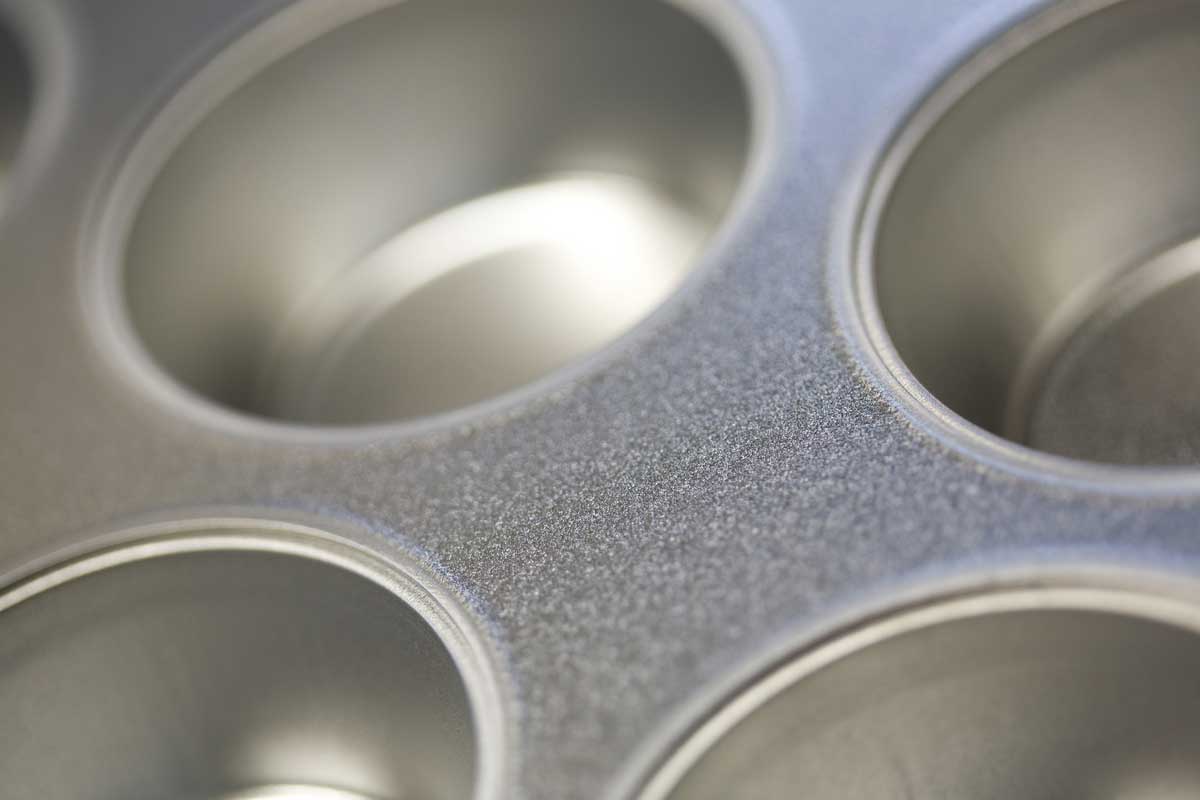Metal fabrication often focuses on the processes of cutting and forming sheets of metal. However, the fabrication process does not end there. Metal finishing services create a functional or decorative finish to the exterior of metal parts to improve their appearance and quality. A vital part of the fabrication process, finishing, brings the process to completion with a part that is what your project needs.
Since it’s important for you to know which type of metal finish to ask for, let’s go over the two different types: metal and surface finishing.

Metal Finishing
Metal finishing is the process of adding a layer to the material to achieve a better appearance or improve its durability. Surface finishing is the process of removing a layer from the material to achieve better functionality or improve its appearance.
Anodizing
Anodizing is an electrochemical process that increases the corrosion resistance of a metal part by forming a layer of oxide on its surface.
By immersing aluminum in an acid electrolyte bath and passing an electrical current through it, a protective aluminum oxide coat forms from the aluminum itself. The result is a hard and durable coating that increases resistance to corrosion and wear. The coating does not peel or chip, and lasts indefinitely.
Anodizing aluminum provides a better adhesion for paint primers than bare metal, while still maintaining its texture. Anodized aluminum and aluminum alloy parts are commonly found in aircraft and architectural components, and consumer goods.
Metal Plating
For this option, a metal is used as an outer coating for a different type of metal. Thin layers of metal (like nickel, copper, chromium or aluminum) are used. Gold, silver and platinum can also be used for decorative purposes, as in jewelry. Metal plating improves durability, corrosion resistance, and the exterior appearance of the metal product.
Galvanizing is one of the most widely used electroplating metal finishing options – most hardware parts are zinc plated. The process involves dipping the metal part into a molten zinc bath. The zinc serves as a protective coating that shields the metal from water, moisture, and other elements that may tarnish the metal. Galvanizing is relatively less expensive than other finishing options. It is a quicker process and only takes one day to set, unlike other coatings.
Blackening
Black oxide, blackening, oxidizing, and gun bluing are all terms that refer to the process of forming a black iron oxide on the surface of ferrous metals. Oxidizing salts consisting of catalysts, activators, and additives within the coating undergoes a chemical reaction with the part’s iron surface. The result of this chemical reaction is the formation of black iron oxide (magnetite) on the surface of the metal being coated.
The resulting lustrous black finish provides minimal changes to the parts dimensions, as would be seen with a paint or plate finish. This provides corrosion resistance to critically sized parts. Blackening parts can be welded without the release of noxious fumes encountered with welded paint parts. Black oxide is commonly used for automotive and motorcycle parts, locks, and firearms.
Powder Coating
Powder-coating is commonly used for metals found in products from industrial machinery to household items. Powder coating applies a decorative finish that is like paint, but with greater durability. Powder coated products are more resistant to scratches, corrosion, fading from sunlight, and extreme weather – it's a tough one, that coat metal finish.
The coating is typically applied with a spray gun electrostatically and then cured under heat to produce a textured, matte, or glossy coating. Because powder coating does not use a liquid carrier, it can produce thicker coatings than conventional paints without running. Additionally, because no carrier fluid evaporates away, the coating process emits few volatile organic compounds.
Finally, several powder colors can be applied before curing them all together, allowing color blending and special bleed effects in a single layer. A textured powder-coat finish is highly effective in covering small surface defects.
Surface Finishing
Deburring
Deburring is the process of smoothing the rough edges of a metal object or component. Laser cutting creates thermal burrs referred to as slag. Whenever a piece of metal is cut, punched or drilled, it creates small, sharp burrs that can be a potential hazard.
In the food industry, for example, small flecks of metal that flake off and end up in food can be a health hazard. Components used in critical assemblies such as in commercial aircraft can also pose a serious threat if parts are faulty. To eliminate this, metalworkers employ a wide range of different tools—ranging from sandpaper to large industrial machinery—to shave off burrs, leaving parts with clean smooth edges.
Depending on the part and manufacturing process, vibratory finishing or tumbling can be used to remove burrs from metal parts. Not all parts lend themselves to tumbling. Fragile, complex parts made from lighter gauge material and more delicate alloys are never subjected to stress from being tumbled onto each other.
Deburring produces a high-quality finish and a smooth edge. No burrs or sharp edges makes for safe parts, a better adherent for paint, and products that just look better.
Graining
Graining is a technique to add uniform, parallel grains to aluminum and stainless steel parts. Wide-belt sanding and brushing the flat workpiece deburrs and creates a beautiful finish prior to forming.
Brushed metal finishing is an effective method for removing surface imperfections. These finishing machines create a uniform, parallel grain surface texture to smooth out a product’s exterior. An abrasive belt or wire brush is usually employed to achieve this effect. In addition, the singular direction of the belt or brush can create slightly rounded edges perpendicular to the grain.
The fabrication shop tries to avoid cross-graining. The raw sheet has a natural micrograin direction that runs parallel to the sheet length (mill rolling direction). These grains form when the molten metal cools to a solid and will impact the design in terms of strength and appearance.
It is possible to tell the rolling direction on aluminum sheets with the naked eye, except on a bright sheet that is rolled with mirror finished rolls. The scratch pattern on the rolls will imprint on the sheet as it is rolled. Look for the long line pattern on the sheet – that is the rolling direction.
When specifying a grain direction, perpendicular to the bend is structurally the best practice. You can make a bend with a tighter inside radius without cracking if the bend line is across the grain, rather than parallel.
Putting On the Finishing Touches
When shops examine metal finishing technology, they have a myriad of options to consider. Carefully weighing the alternatives is paramount to successful finishing.
Quality metal finishing will increase your product’s durability and aesthetics. Naimor Metal Fabrication offers a wide range of metal finishing services that can be customized for your project’s unique requirements.






